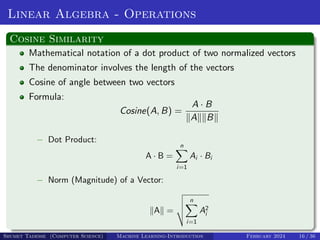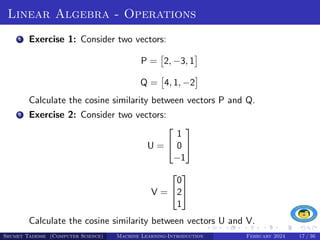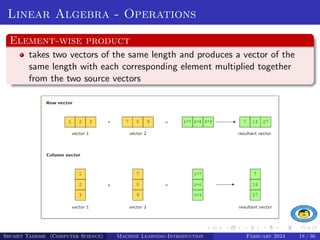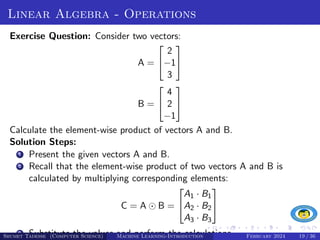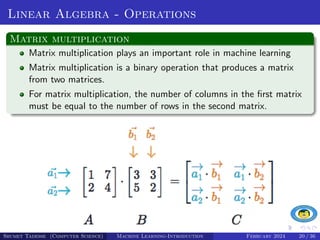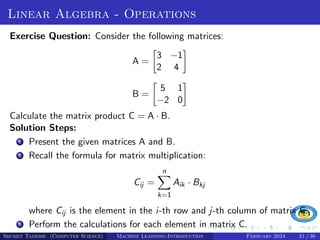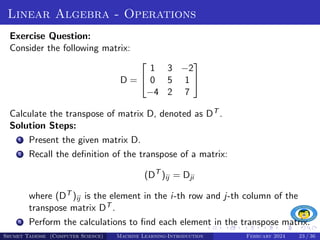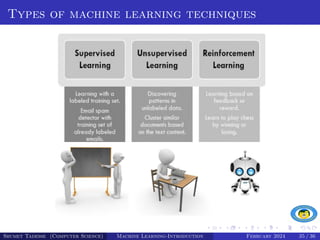The document serves as an introduction to machine learning, defining it as a subset of artificial intelligence focused on enabling computers to learn from data and improve automatically. It emphasizes the growing importance of machine learning in handling vast amounts of data, addressing challenges such as information overload, and relies on fundamental mathematical concepts like linear algebra and statistics. Moreover, it outlines the historical context and relationships between machine learning and other fields, highlighting its multidisciplinary nature.
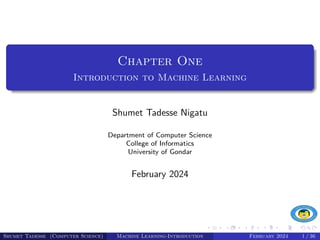
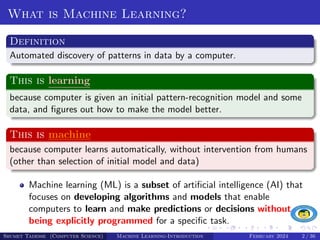
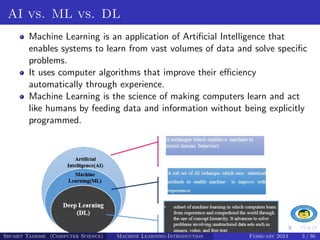




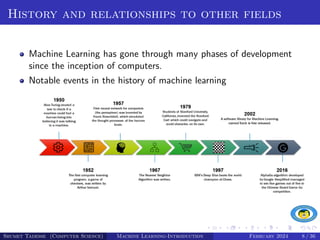



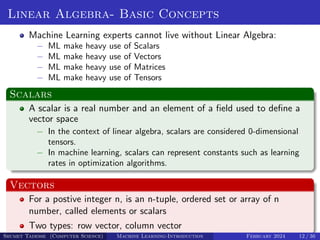
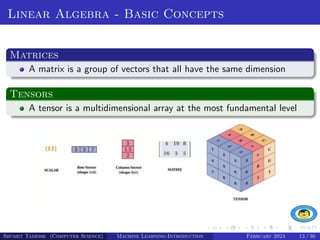

![Linear Algebra - Operations
Dot product
The dot product takes two vectors of the same length and returns
a single number (scalar)
It is an algebraic operation that takes two equal-length sequences of
numbers (usually coordinate vectors), and returns a single number.
− Compute the dot product of a=[1, 2, 3] and b=[4, -5,6]
Dot product is a measure of how big the individual elements are in
each vector
Exercise: Find the dot product (·) of vectors X and Y.
X =
1
−2
3
Y =
−4
0
2
Shumet Tadesse (Computer Science) Machine Learning-Introduction February 2024 15 / 36](https://image.slidesharecdn.com/mlchapter1-240411081907-fa6a56d6/85/Course-Title-Introduction-to-Machine-Learning-Chapter-One-Introduction-15-320.jpg)
